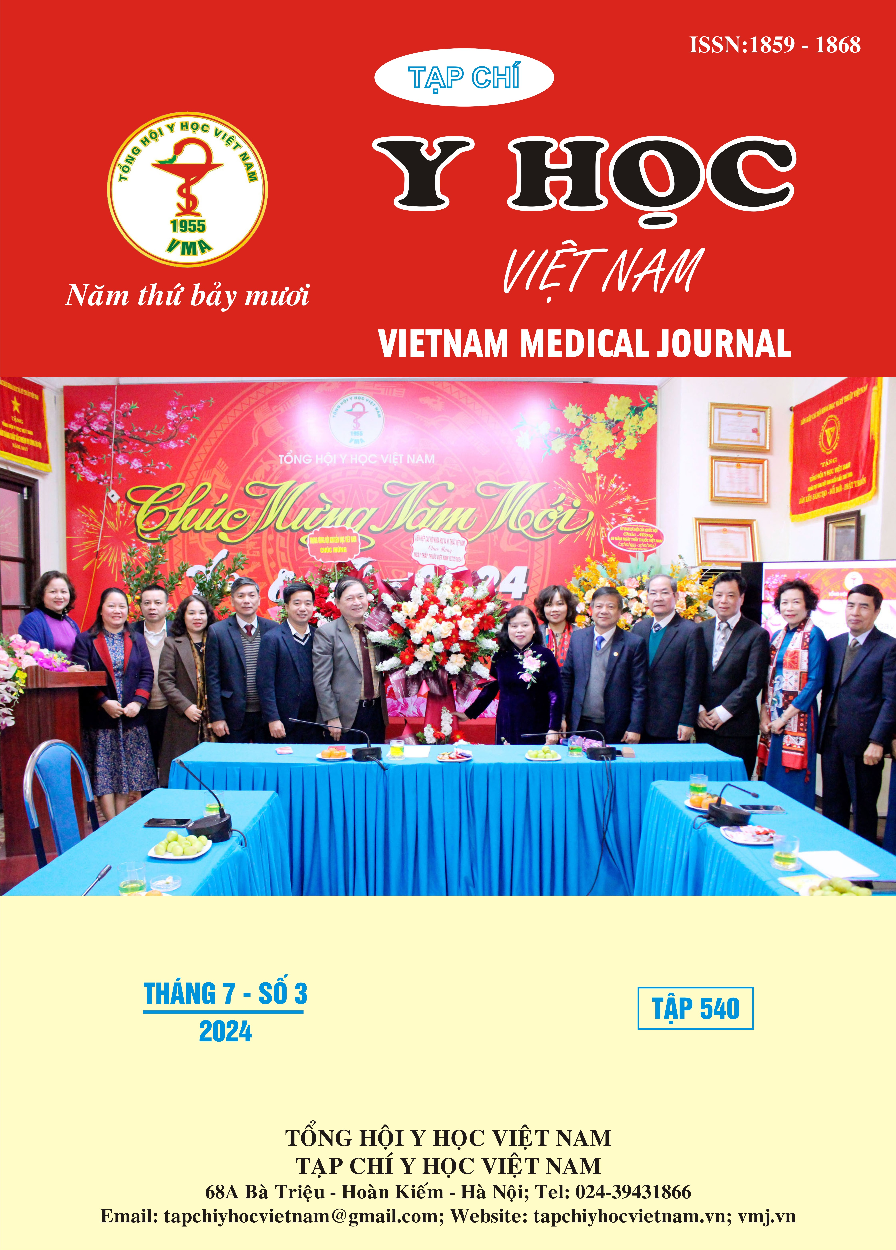EVALUATING THE RESULT OF IMMOBLIZING SPLIT-THICKNESS SKIN GRAFT BY VACUUM - ASSISTED CLOSURE DEVICE
Main Article Content
Abstract
Introduction: Hematoma, infection and shear forces of interface are the common causes of skin graft loss. Recently, immobilizing split-thickness skin graft by VAC has improved those conditions and provided better results. Patients and methods: A cross-sectional study in 18 patients who underwent split-thickness skin graft and VAC for immobilizing , from 01/2023 to 01/2024 at Hanoi Medical University hospital. Results: The average percent graft take was 96.78% (93-99%), with 16/18 patients (88.89%) have percent larger than 95%. The average hospitalization time post-surgery was 8.22 (3-19), none of the patients needed a second surgery, and none of the patients had infection or seroma complications. Conclusion: the results of our research contribute to the idea of utilizing VAC to immobilize split-thickness skin graft, which is effective and reduces hospitalization time and financial burden.
Article Details
Keywords
Split-thickness skin graft, VAC, immobilizing skin graft.
References
2. Yin Y, Zhang R, Li S, Guo J, Hou Z, Zhang Y. Negative-pressure therapy versus conventional therapy on split-thickness skin graft: A systematic review and meta-analysis. Int J Surg. 2018;50:43-48. doi:10.1016/j.ijsu.2017.12.020
3. Nakamura Y, Fujisawa Y, Ishitsuka Y, et al. Negative-pressure closure was superior to tie-over technique for stabilization of split-thickness skin graft in large or muscle-exposing defects: A retrospective study. J Dermatol. 2018; 45(10): 1207-1210. doi:10.1111/1346-8138.14536
4. Scherer LA, Shiver S, Chang M, Meredith JW, Owings JT. The Vacuum Assisted Closure Device: A Method of Securing Skin Grafts and Improving Graft Survival. Arch Surg. 2002;137(8). doi:10.1001/archsurg.137.8.930
5. Petkar KS, Dhanraj P, Kingsly PM, et al. A prospective randomized controlled trial comparing negative pressure dressing and conventional dressing methods on split-thickness skin grafts in burned patients. Burns. 2011;37(6):925-929. doi:10.1016/j.burns.2011.05.013
6. Morykwas MJ, Argenta LC, Shelton-Brown EI, McGuirt W. Vacuum-Assisted Closure: A New Method for Wound Control and Treatment: Animal Studies and Basic Foundation. Ann Plast Surg. 1997; 38(6): 553-562. doi:10.1097/00000637-199706000-00001
7. Vacuum Assisted Closure: Recommendations for Use. Int Wound J. 2008; 5:iii-19. doi:10.1111/j.1742-481X.2008. 00537.x
8. Kantak NA, Mistry R, Varon DE, Halvorson EG. Negative Pressure Wound Therapy for Burns. Clin Plast Surg. 2017;44(3):671-677. doi:10. 1016/j.cps.2017.02.023
9. Mujahid A, Khalid F, Ali N, Sajjad Y, Khan H, Tarar M. Vacuum-assisted Closure in Integration of Skin Graft Over Scalp Wounds: A Randomised Control Trial. J Coll Physicians Surg Pak. 2020;30(02):163-167. doi:10.29271/jcpsp.2020.02.163
10. Cao X, Hu Z, Zhang Y, et al. Negative-Pressure Wound Therapy Improves Take Rate of Skin Graft in Irregular, High-Mobility Areas: A Randomized Controlled Trial. Plast Reconstr Surg. 2022; 150 (6): 1341-1349. doi:10.1097/PRS. 0000000000009704


